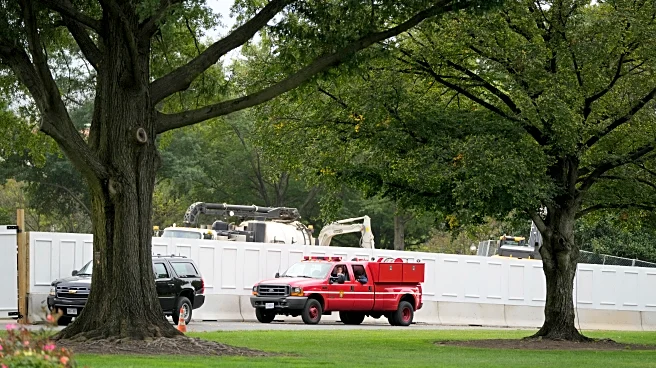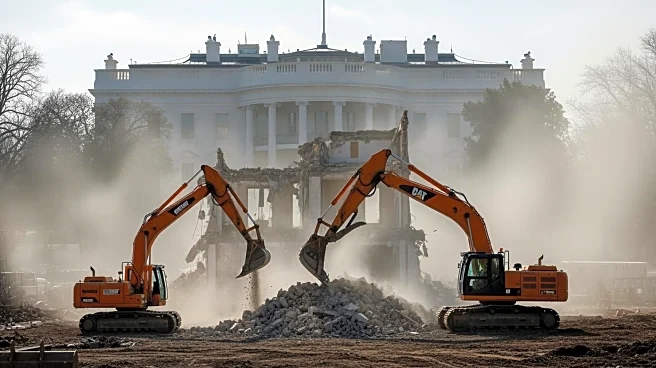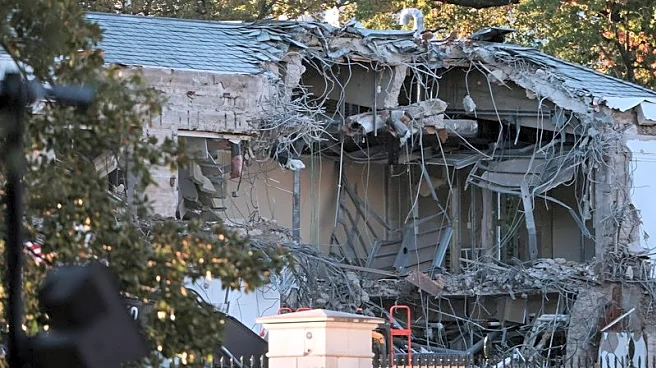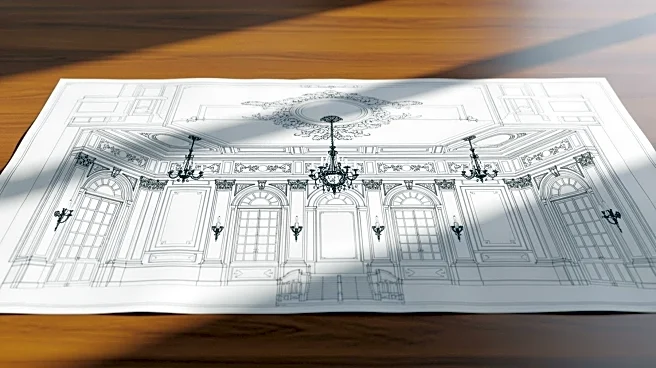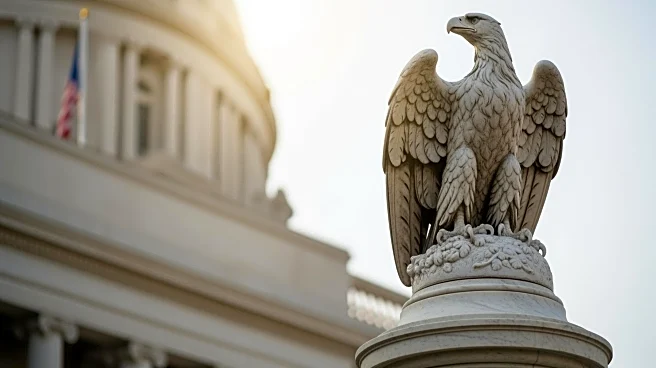What's Happening?
President Donald Trump has directed the demolition of part of the White House's East Wing to construct a new ballroom, despite lacking approval from the National Capital Planning Commission. The demolition began
on Monday, with construction equipment visibly tearing into the East Wing's facade. The ballroom project, championed by Trump, has proceeded without the necessary sign-off from the federal agency responsible for overseeing construction on government buildings in Washington, D.C. Will Scharf, the chairman of the commission and a top aide to Trump, stated that the agency does not have jurisdiction over demolition work on federal property, only construction.
Why It's Important?
The decision to proceed with the demolition without proper approval raises concerns about adherence to regulatory processes and the potential implications for federal oversight of construction projects. This move could set a precedent for future administrations regarding the modification of historic government buildings. The lack of approval from the National Capital Planning Commission may lead to legal challenges or public scrutiny, impacting the administration's relationship with regulatory bodies and preservationists. The construction of the ballroom could also affect the historical integrity of the White House, a symbol of American governance.
What's Next?
The continuation of the ballroom construction may face opposition from preservationists and regulatory bodies, potentially leading to legal challenges. The National Capital Planning Commission may seek to assert its authority over the project, which could result in delays or modifications to the construction plans. Public and political reactions to the demolition could influence future decisions regarding the preservation of historic government buildings. The administration may need to navigate these challenges while balancing the desire for modernization with respect for historical preservation.
Beyond the Headlines
The decision to proceed with the demolition without approval highlights broader issues of executive power and regulatory oversight. It raises questions about the balance between modernization and preservation in government buildings, and the role of federal agencies in maintaining historical integrity. The construction of the ballroom may also reflect broader cultural shifts in how historical sites are valued and modified in the pursuit of contemporary needs.


